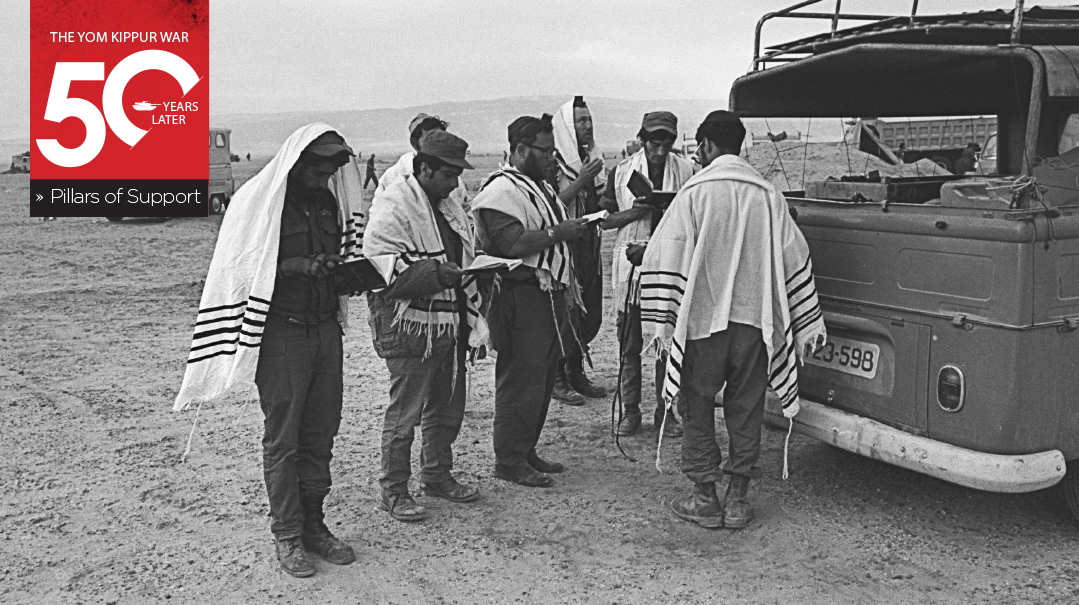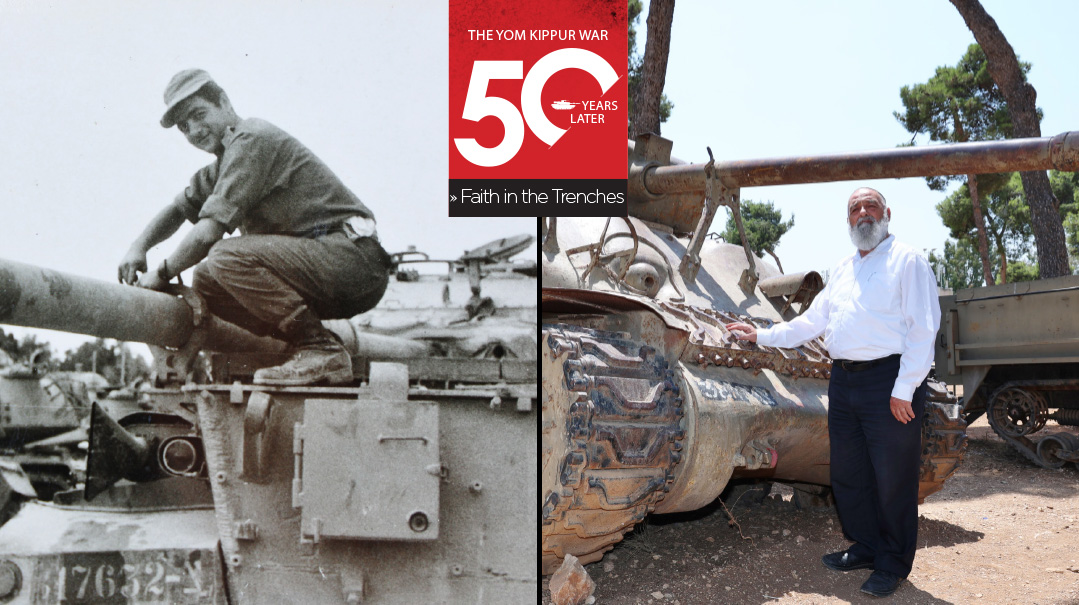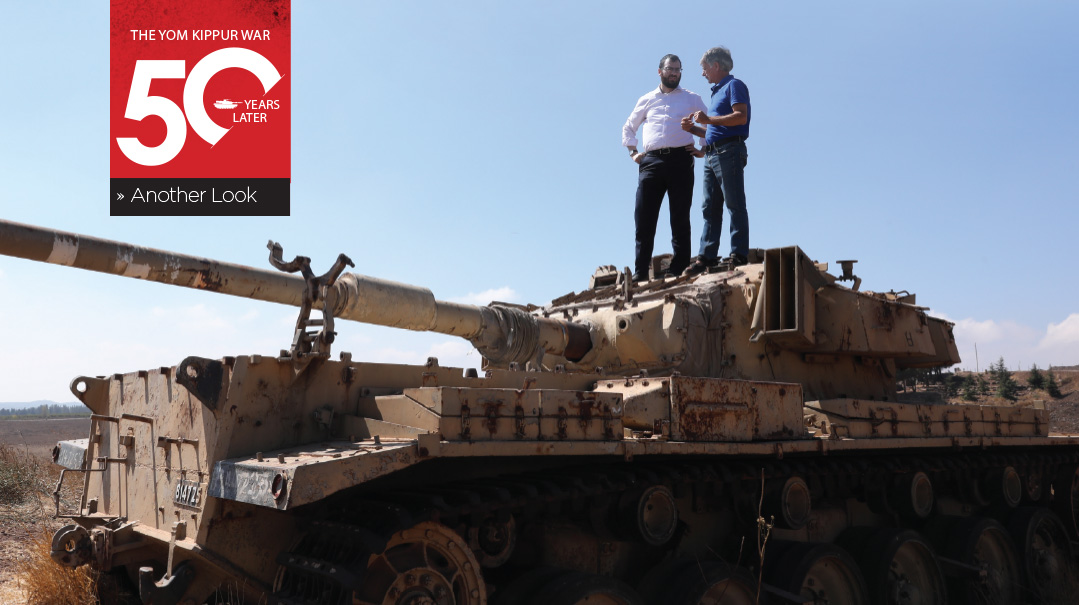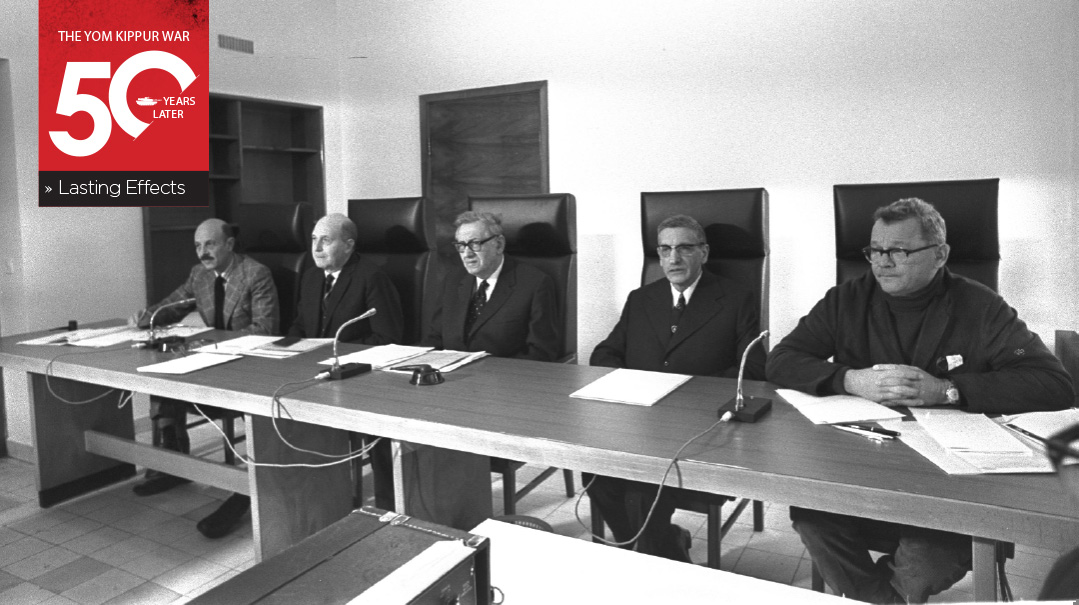Settling Unfinished Scores

A half century after the guns fell silent over Sinai and the Golan, revisiting the climactic scenes on the front and those inside the heart
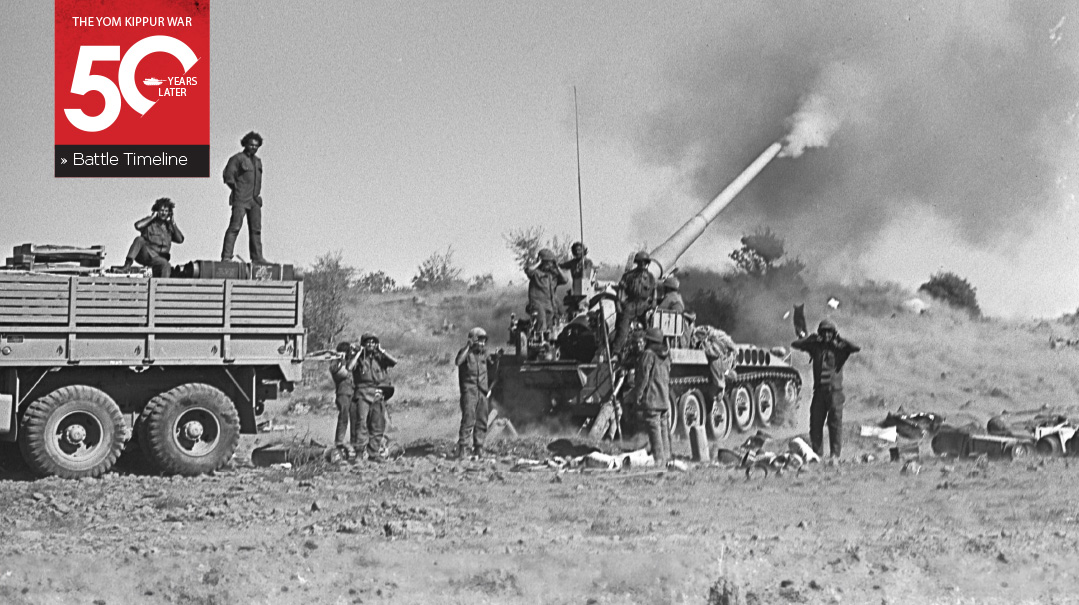
Photos: Government Press Office
The Yom Kippur War of 1973 marked the third time in 25 years, starting with the War of Independence, that the State of Israel faced menacing battles on multiple fronts against enemies with more manpower and weaponry.
For the third time, Israel prevailed, but this time, the victory was more bitter than sweet. As the state commemorates the 50th anniversary of the war that broke out on the most solemn day of the Jewish calendar, we offer our review of the backdrop, the battles, some of the heroes and some of the goats, and how this war reshaped reality in the Middle East
IN many respects, the 1973 Yom Kippur War was Act II of the 1967 Six Day War, which ended in a miraculous Israeli victory over Egypt, Syria and Jordan.
In 1967, Israel had captured the Sinai, an area almost three times the size of New Jersey, from Egypt in the Six Day War. Israel also recaptured Judea and Samaria, its Biblical heartland, from Jordan, and the Golan Heights from Syria. The Sinai also has strategic importance, as its western border abuts the Suez Canal, one of the world’s most important shipping lanes. For a few short years, Sinai’s oil wells provided Israel with a level of energy independence it never had before. Refusing to accept defeat, Egypt led a coalition that included Jordan, Syria, and at times, the Palestine Liberation Organization (PLO) in what became known as the War of Attrition, attacking Israel by land, sea, and air hundreds of times between 1967 and the summer of 1970.
The War of Attrition claimed almost twice as many Jewish lives as the Six Day War and finally ended with a cease-fire in August 1970, which Egypt and its military sponsor — the Soviet Union — broke almost immediately by stationing surface-to-air (SAM) missiles in the Sinai Peninsula well past the agreed-upon cease-fire lines.
For three years, there was relative quiet, and Egyptian president Anwar Sadat used the lull to prepare for the next war.
For Israel, it couldn’t have come at a more inopportune time. At 2 p.m. Israel time, on Yom Kippur, Egypt and Syria launched a massive attack on the territories that Israel had captured from them in 1967.
Their war plans were predicated on fully surprising Israel, using their superior manpower to hamper Israel from defending the Golan and the Sinai simultaneously, with a goal of reaching the Jordan River within 24 hours and capturing the slopes of the Jordan before Israel could mobilize its reserves.
The first few days of war rudely shattered Israel’s aura of military invincibility. The old jokes from 1967 about Arab tanks being equipped with back-up lights were no longer humorous.
Israel was indeed caught by surprise. In the months and weeks before the war, IDF military intelligence repeatedly downplayed multiple warning signs of an imminent attack. Much of the IDF, including almost all of its reserves, were on leave, attending synagogue services in their hometowns, and the IDF left many strategic border posts unmanned or undermanned. Israel entered the war with 358 fighter jets compared to 998 for its enemies. Enemy tanks outnumbered Israel by 4,350 to 2,100 and there were 137 Arab naval vessels compared to Israel’s 37.
Unlike during the Six Day War, Israel’s political echelon decided not to launch a preemptive attack against the enemy forces because they feared they would lose international support for what proved to be a lengthier battle than expected.
In the war’s first two days, Egyptian tanks, backed with SAM anti-aircraft missiles, easily crossed the Suez Canal, seizing a strip of about ten miles of Israel-held Sinai. Syria recaptured strategic outposts on the Golan Heights, and had they pressed on, could have launched an offensive toward Lake Kinneret and northern Israel.
Despite the early reversals and the manpower and weaponry advantages the Arabs enjoyed, Israel, with Hashem’s help, chased the invaders out in 18 days, leveraging a combination of individual bravery, superior artillery skills and airpower, and the flexibility of its command structure to switch from defense to offense in the heat of battle. The war ended with IDF troops 77 miles from Cairo and 25 miles from Damascus.
Fifty years is not as long as it seems, and the lessons learned on the battlefield, and in the halls of political power, remain as relevant today as they were in 1973.
Oops! We could not locate your form.

